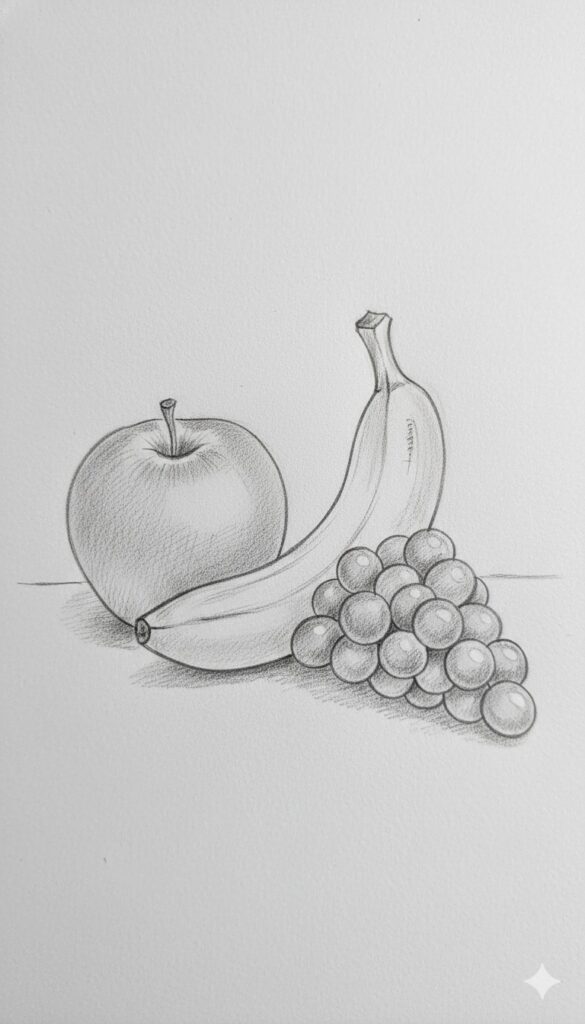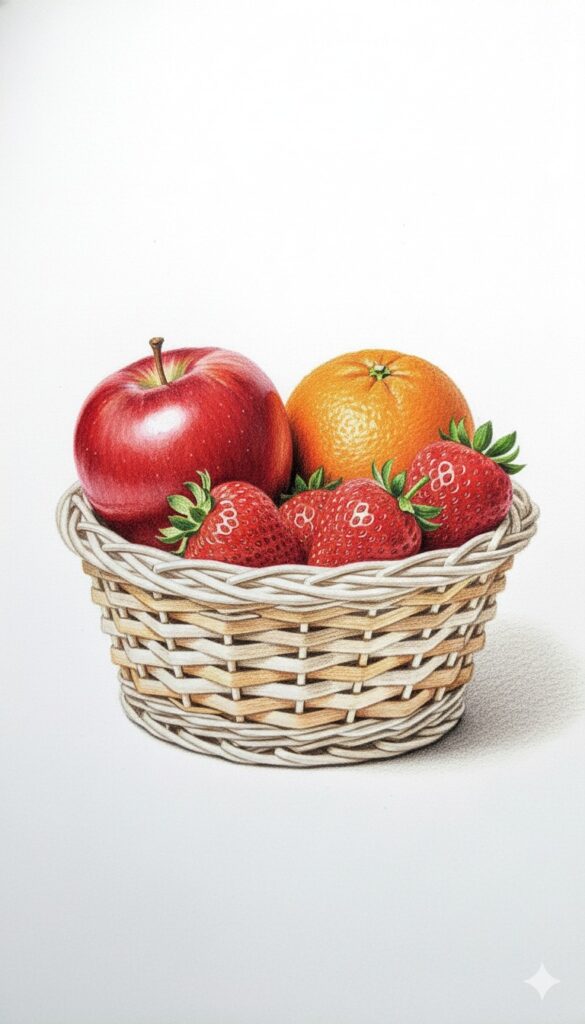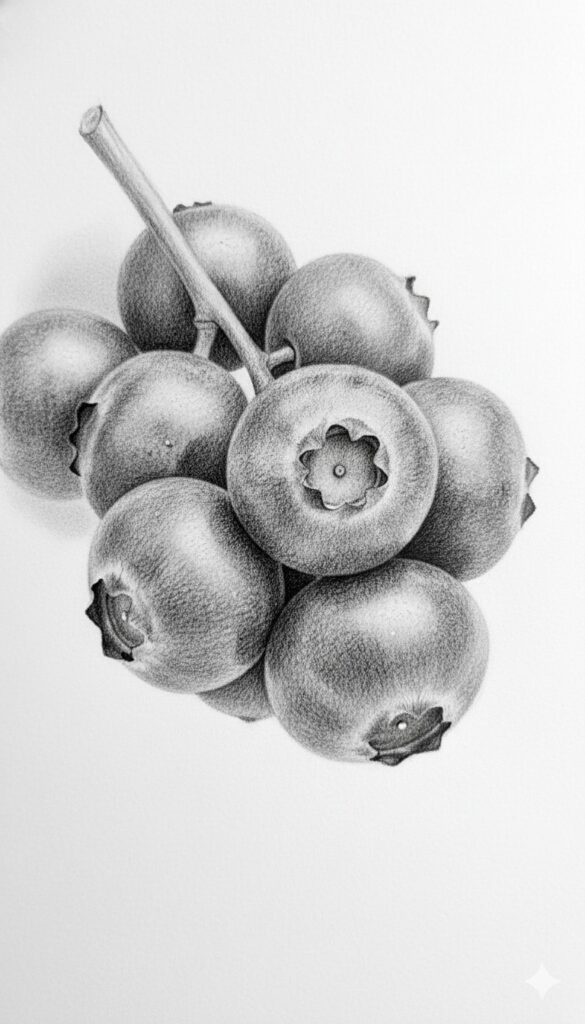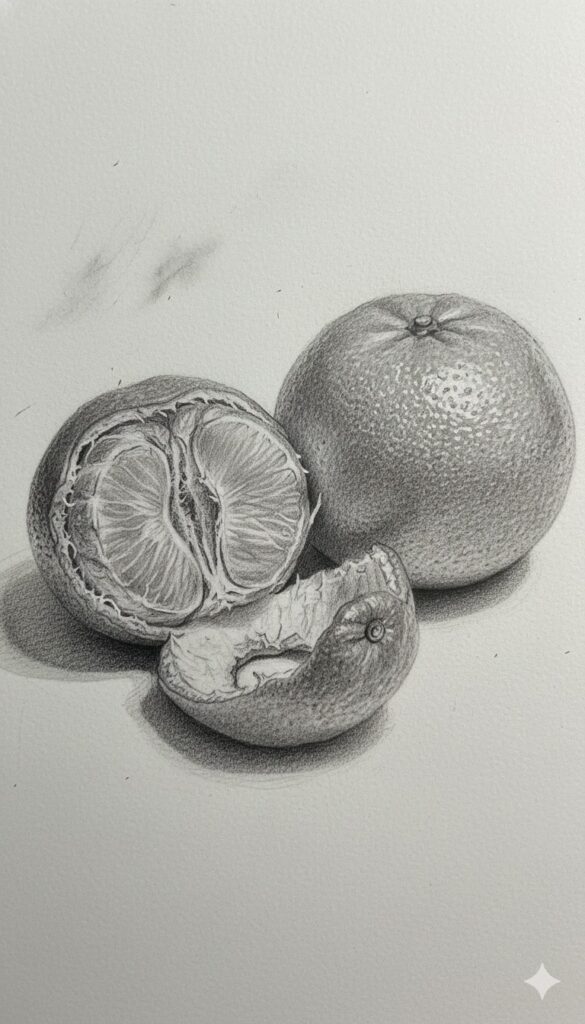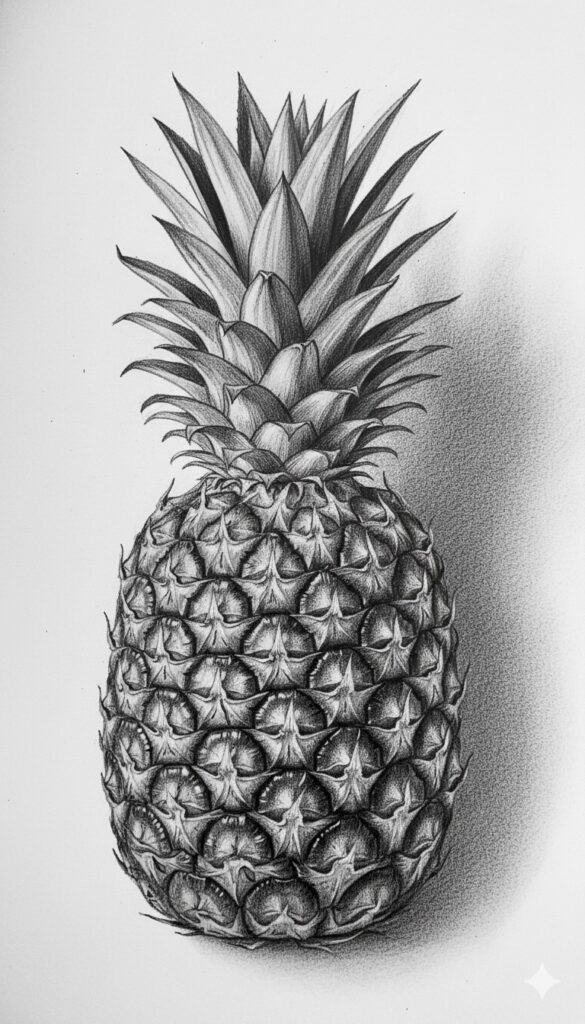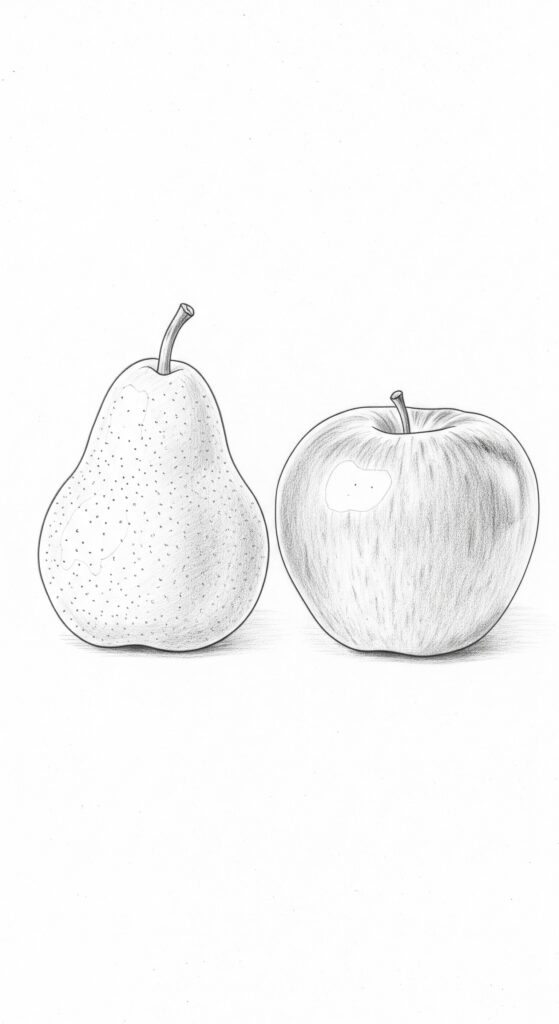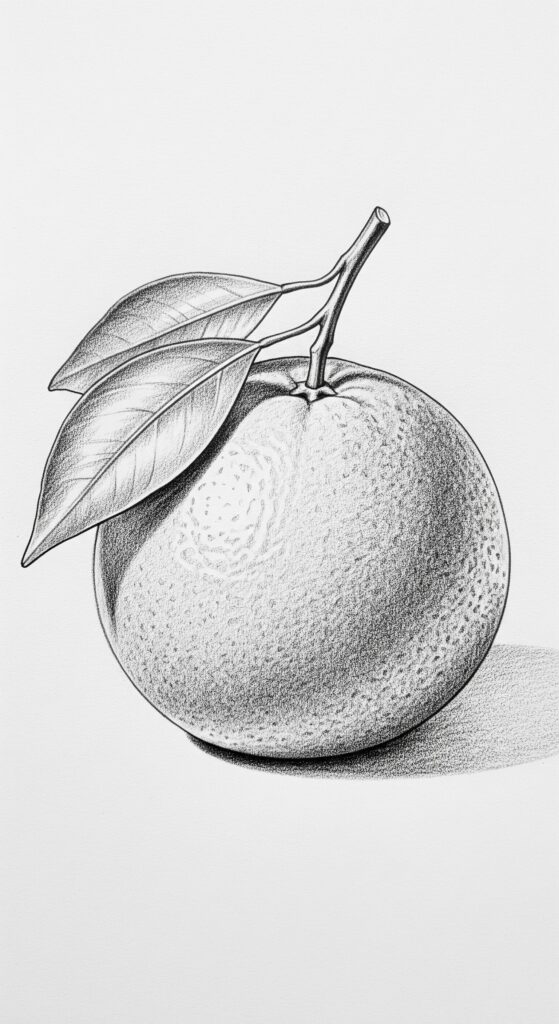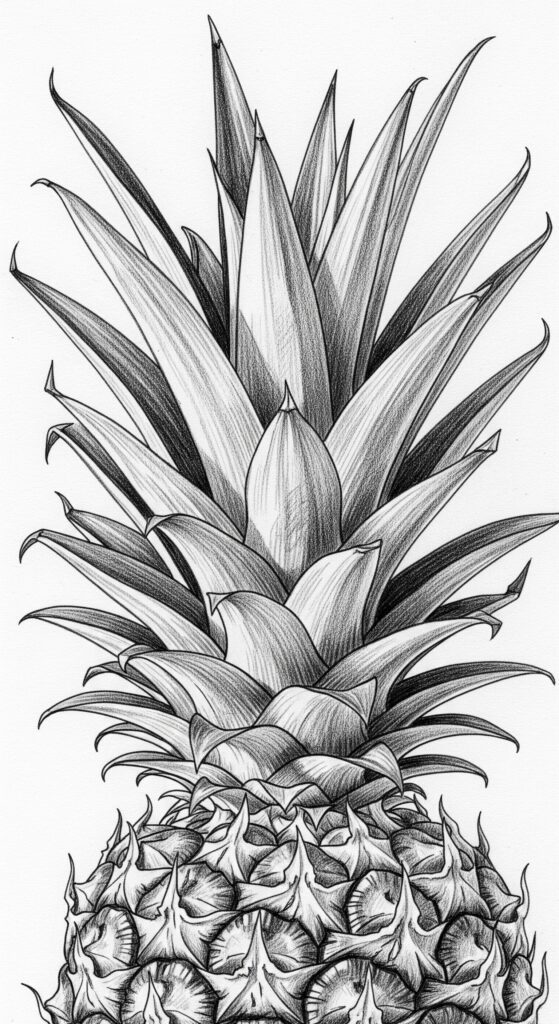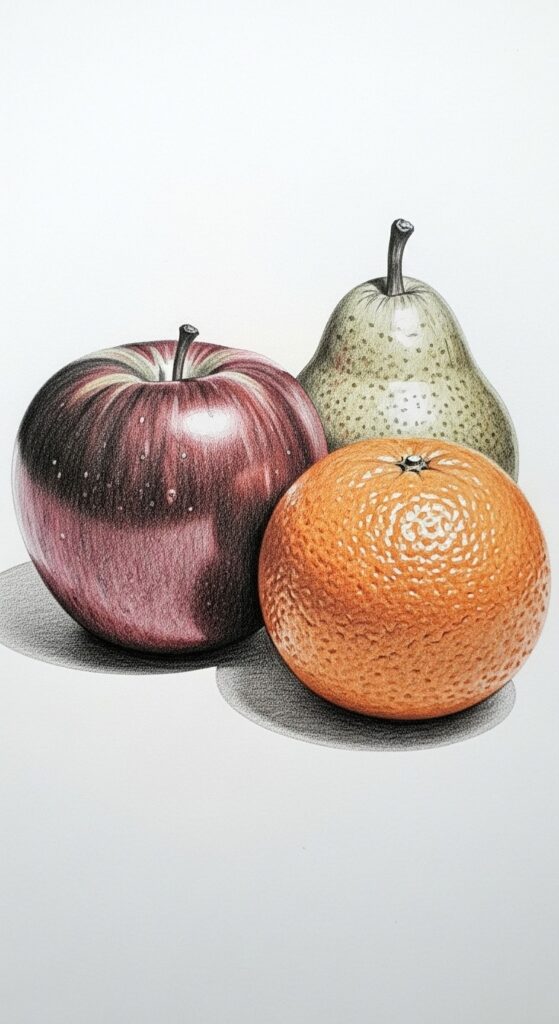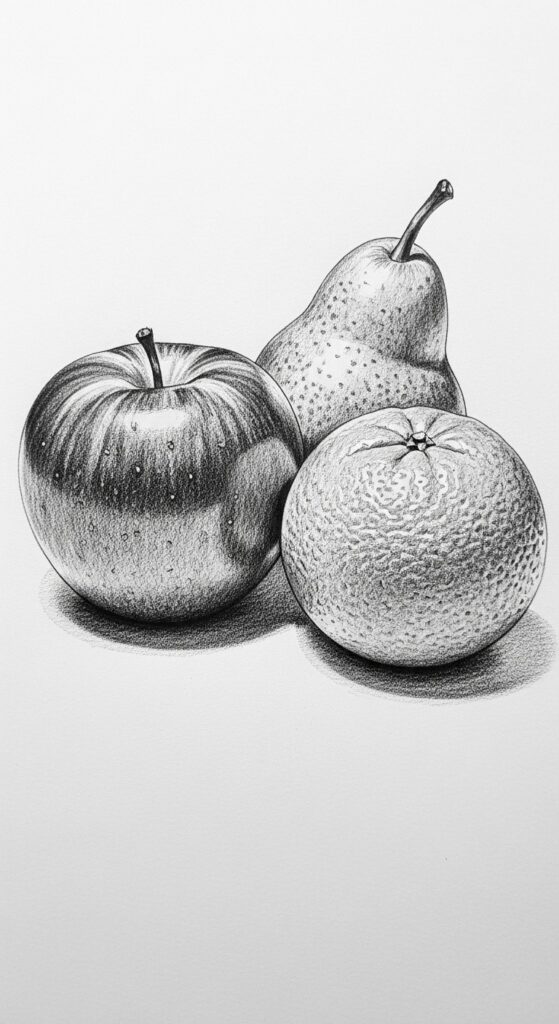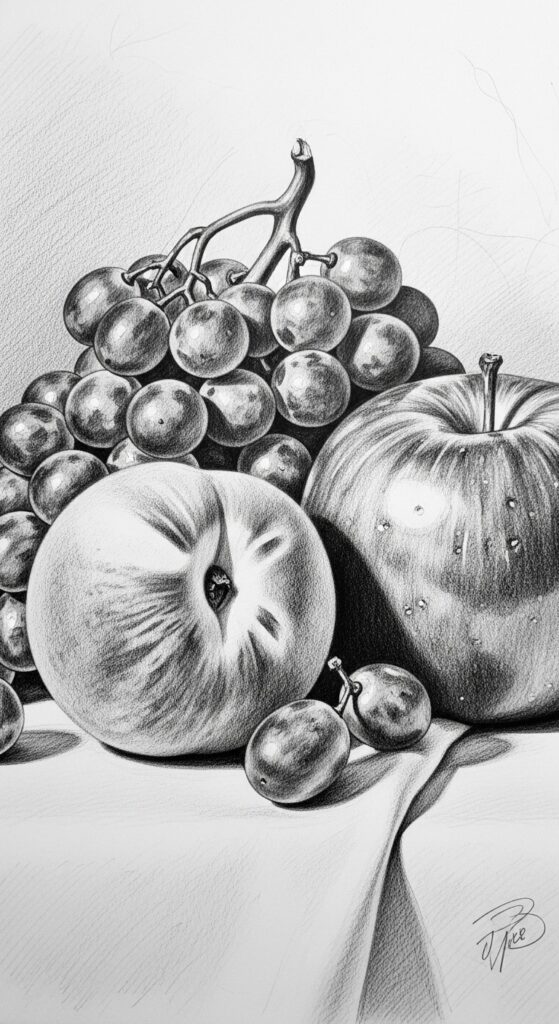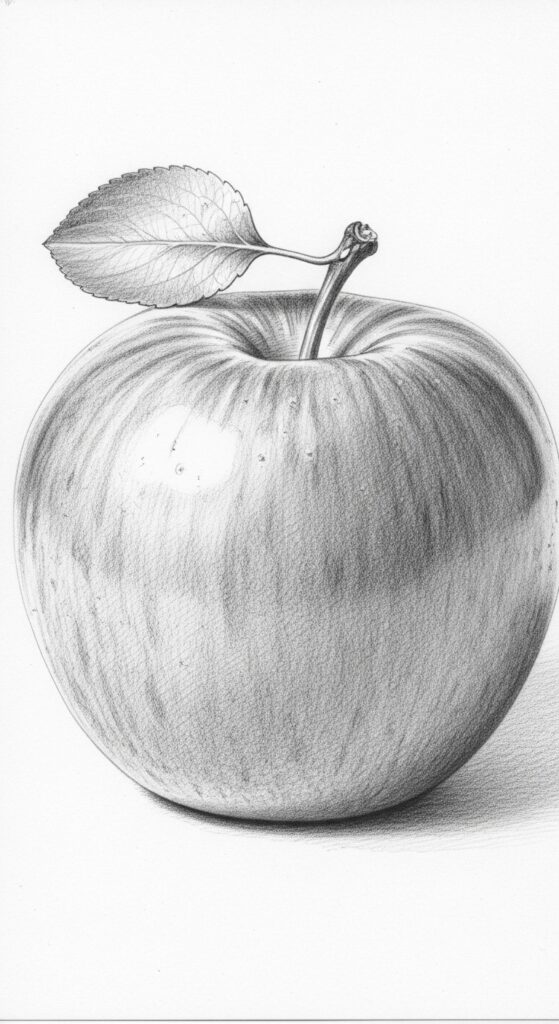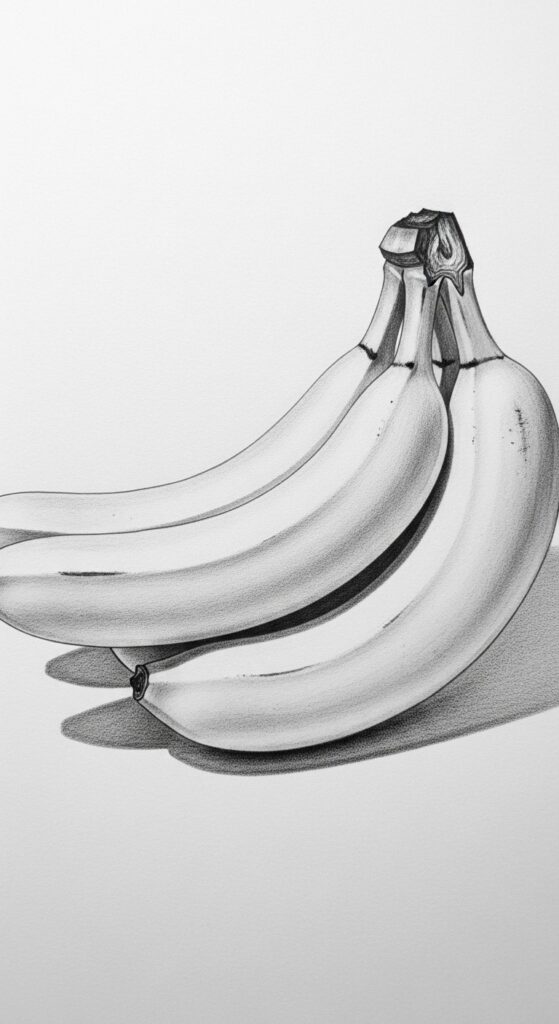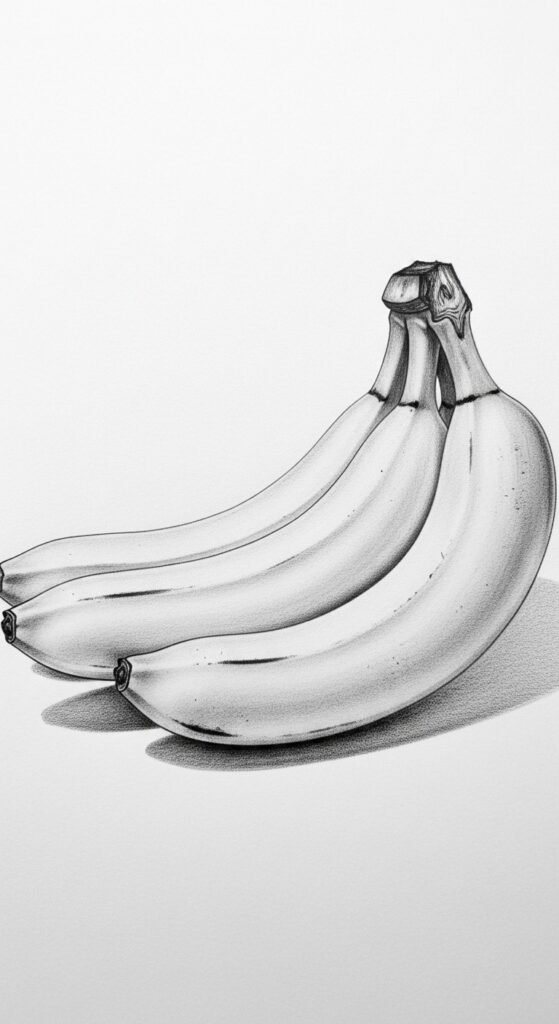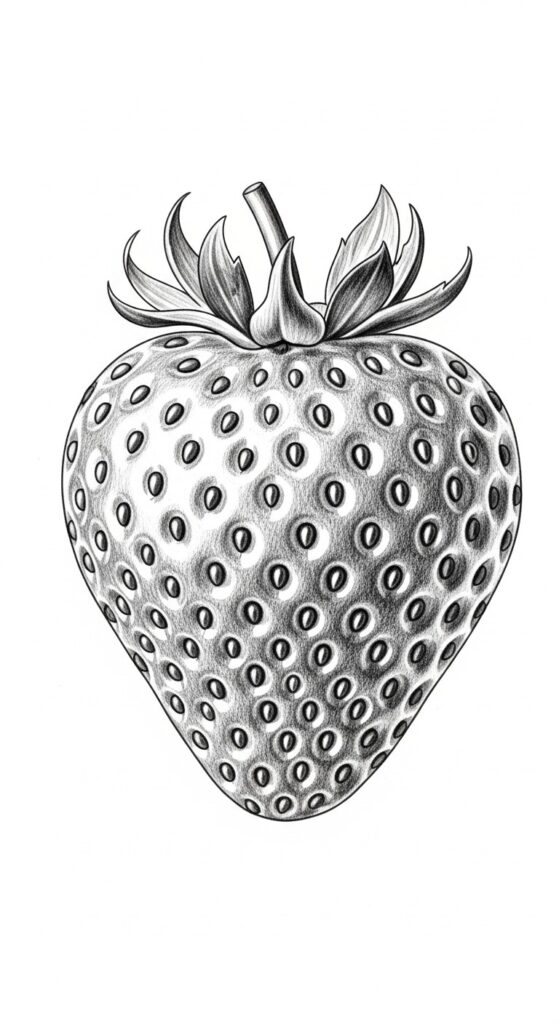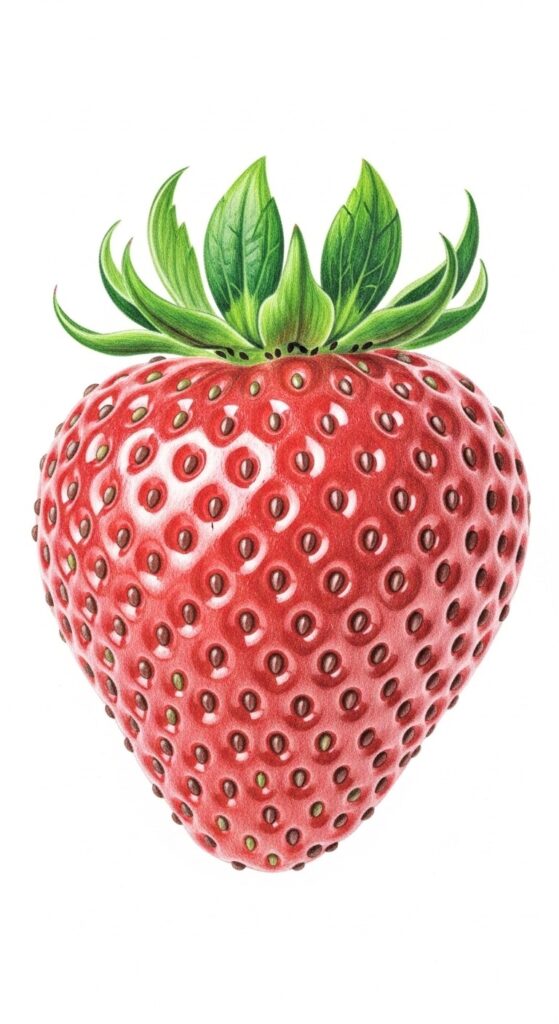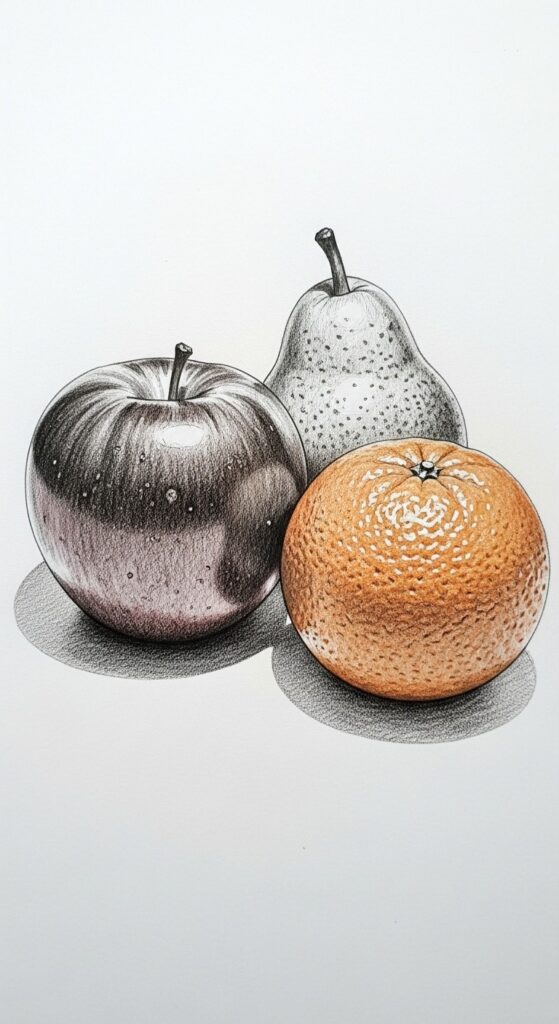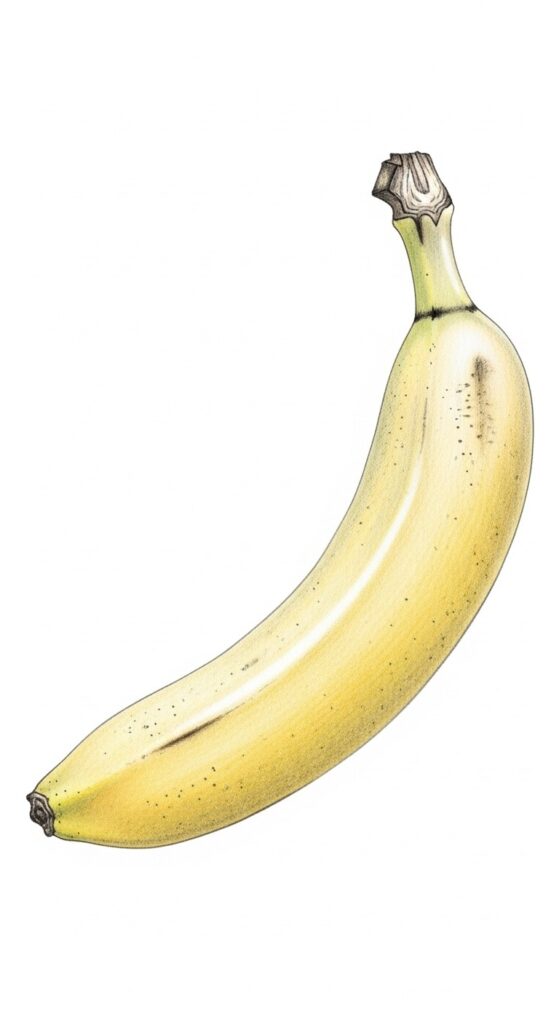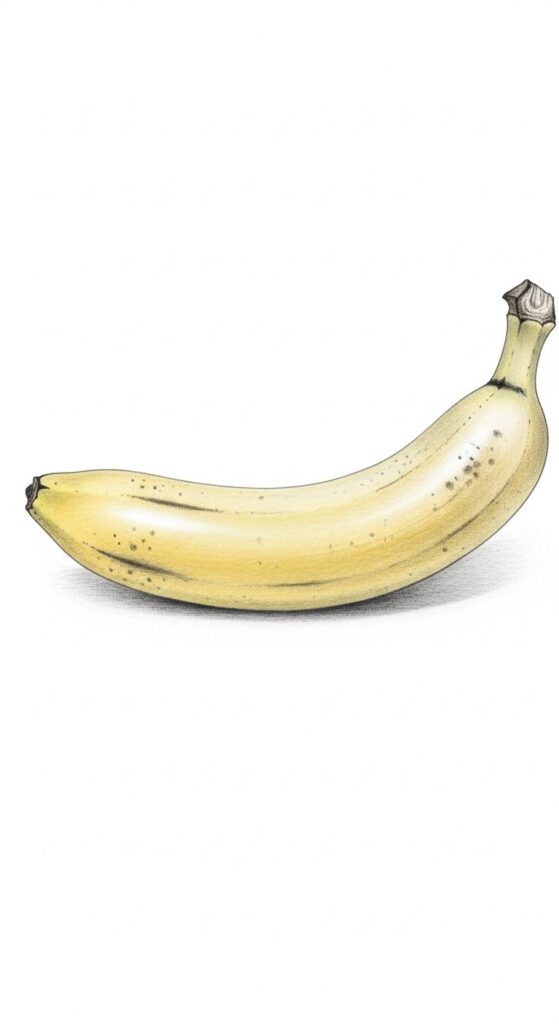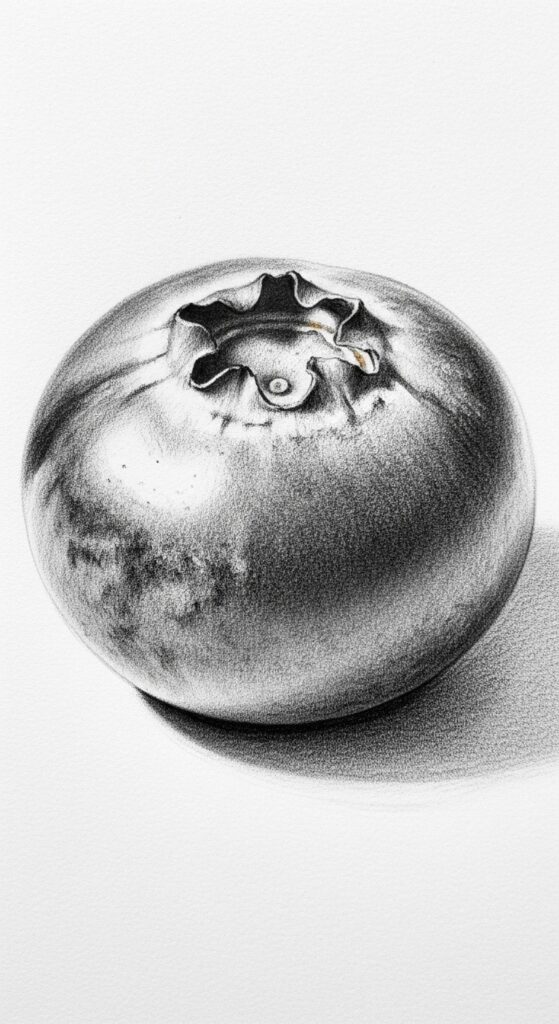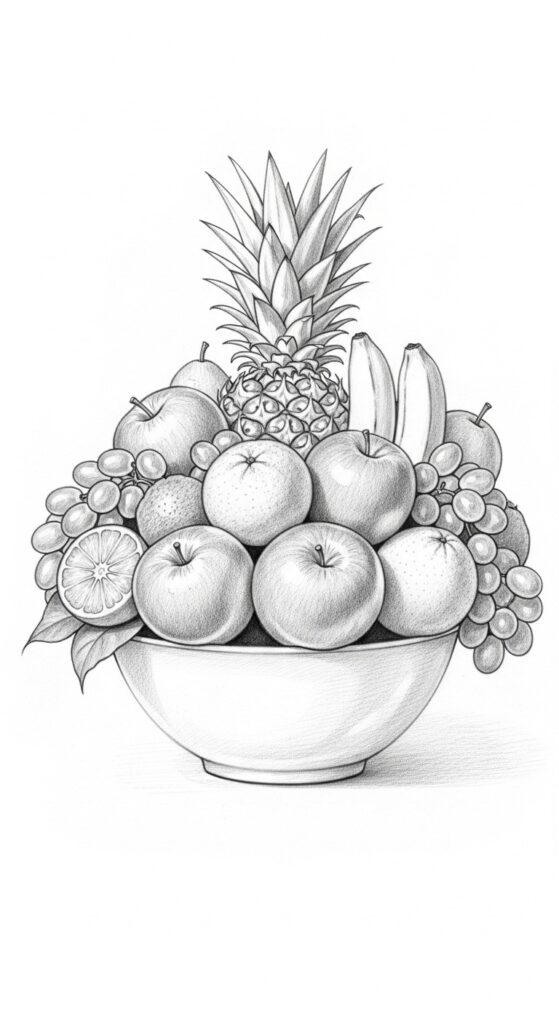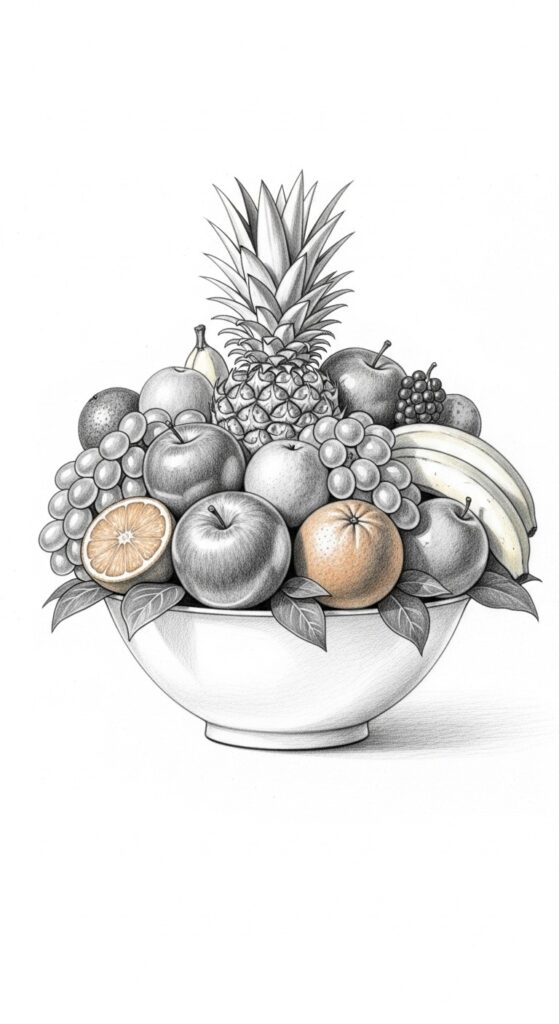Drawing has always been my go-to escape. But there’s something truly relaxing about sketching fruits with a pencil — the curves, textures, and little imperfections make every piece unique. Whether it’s the shine on an apple, the bumpy surface of an orange, or the soft lines of a banana, each fruit holds its own beauty waiting to be brought to life on paper.
In this article, I’ll share why fruit drawing pencil sketches are such an enjoyable form of art, how they spark creativity, and even how you can earn from your sketches. Plus, I’ll list some recommended drawing products that make your art stand out beautifully.
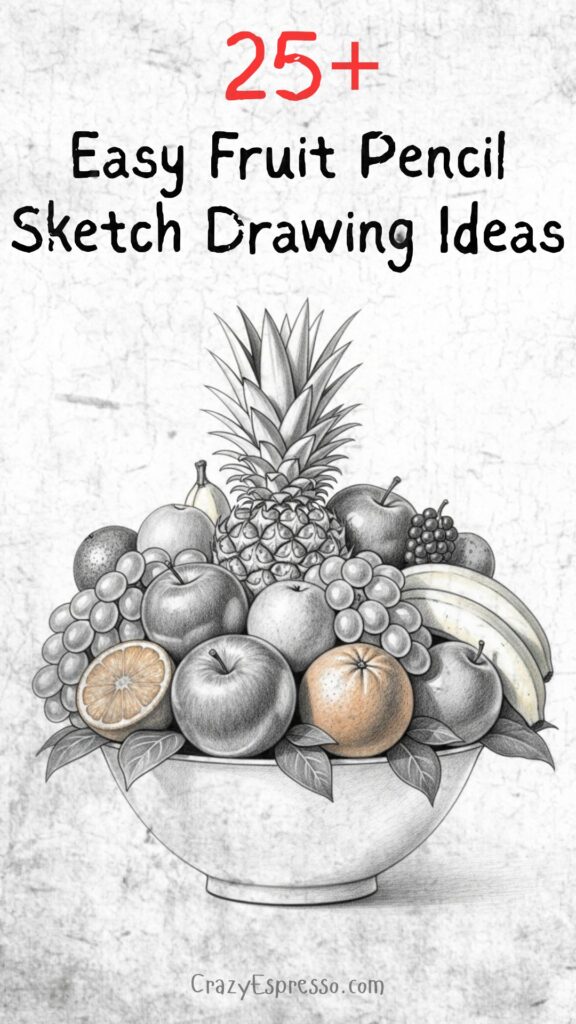
🍇 Why Pencil Drawing Is So Enjoyable
There’s a quiet joy in pencil drawing. It’s simple — no fancy setup, no mess, and no limits. Just a blank page and your imagination. When you start sketching fruits, you notice things you might’ve overlooked before: the subtle shadows under a pear, the smoothness of a grape, or the delicate highlights on a cherry.
Fruit sketches are beginner-friendly too. They don’t demand perfection; instead, they teach patience, observation, and control. Every line you draw feels natural, and every mistake becomes part of your learning process.
What makes pencil sketches enjoyable is that you can create depth and realism just by varying your pressure. Light shading gives softness; darker tones add drama. It’s amazing how one pencil can express so many emotions!
And honestly, drawing fruits reminds me of calm mornings — sitting by the window, sketchbook in hand, capturing the simple beauty of nature. There’s something healing about it.
🍉 How Fruit Sketching Boosts Creativity
Pencil sketching fruits may sound simple, but it’s a wonderful exercise for the creative mind. It helps you train your eyes to notice details and your hands to move with purpose.
Here’s how it enhances creativity:
- Observation Skills: You start seeing more than just “an apple.” You notice light reflections, textures, and curves. That’s the artist’s eye developing!
- Understanding Shapes: Every fruit has a basic geometric form — spheres, ovals, cones. Learning to sketch them helps you master form and proportion.
- Experimentation: Fruits let you experiment with shading techniques — cross-hatching, blending, stippling. Each sketch becomes a mini art experiment.
- Relaxation: Drawing fruits is like meditation. It clears your thoughts, reduces stress, and improves focus.
- Improves Patience: Realistic sketches take time. The more you draw, the more you learn to slow down and enjoy the process.
Creativity doesn’t always come from big, complex projects — sometimes it grows from simple practices like sketching fruits one pencil line at a time.
🍓 How to Earn from Fruit Sketches
Believe it or not, you can make money from your pencil fruit sketches! If you’re consistent and passionate, there are several ways to turn your art into income.
Here’s how:
1. Sell Your Sketches Online
You can list your fruit drawings on platforms like Etsy, Redbubble, or Society6. Art lovers appreciate hand-drawn pieces, especially realistic or minimal pencil art. You can sell them as prints, stickers, or even home decor designs.
2. Create Digital Downloads
Scan your sketches and sell them as digital art prints. People use them for journals, wallpapers, or even tattoo ideas. It’s passive income once your artwork is uploaded.
3. Teach Drawing Tutorials
If you enjoy teaching, record short fruit sketch tutorials for YouTube, Skillshare, or Udemy. People love learning from personal, simple techniques that come from real experience.
4. Offer Custom Artwork
Many cafes, restaurants, and food brands love using fruit sketches for their branding. Offer custom commissions — it can be a logo, menu design, or packaging illustration.
5. Social Media Growth
Share your sketches on Instagram, Pinterest, or TikTok. As your audience grows, you can collaborate with art brands, get sponsorships, or even start your own art store.
Your pencil can be more than just a creative outlet — it can be your source of income if you use it smartly.
🛒 Best Products for Pencil Sketching
To make your drawings look clean, balanced, and professional, having the right tools really matters. You don’t need to buy expensive stuff — just invest in solid basics that make sketching smoother and more enjoyable. Here are a few tried-and-true picks that every pencil artist should have:
1. Pencils (Graphite Set)

Faber-Castell Graphite Sketch Pencil Set - 6 Graphite Pencils (2H, HB, B, 2B, 4B, 6B), Drawing Pencils and Sketching Supplies
View On AmazonThis classic graphite set covers everything from light outlines to dark, moody shading. Harder pencils (H) are ideal for crisp lines, while softer grades (B) blend beautifully for smoother transitions.
✅ Pros:
– Great tonal range for both beginners and pros
– Smooth application and easy to control
– Long-lasting lead with minimal breakage
❌ Cons:
– Needs frequent sharpening during detailed work
2. Sketchbook or Drawing Paper

Fuxi 9 x 12 Sketch Book, Top Spiral Bound Sketch Pad, 100 Sheets 68lb/100gsm Acid-Free Drawing Paper, Art Sketchbook for Drawing Pad for Kids
View On AmazonChoose paper that’s acid-free and medium-textured — it grips graphite just right. A4 or A3 sizes are perfect whether you’re sketching quick doodles or full artworks.
✅ Pros:
– Smooth surface perfect for shading and blending
– Tear-resistant and durable
– Portable spiral-bound design
❌ Cons:
– The cover could be a bit sturdier for travel use
3. Erasers

STAEDTLER Mars Plastic Vinyl Erasers (4-Pack), White Erasers for Clean & Precise Results - Latex-Free, Minimal Crumbling, Made in Peru
View On Amazon- Kneaded eraser: Perfect for lifting graphite gently without tearing paper.
- Vinyl eraser: Great for sharp corrections and fine details.
✅ Pros:
– Clean erasing with no messy crumbs
– Gentle on all types of drawing paper
– Long-lasting and latex-free
❌ Cons:
– Kneaded versions may pick up dirt quickly if not stored properly
4. Blending Tools

43 PCS Blending Stumps and Tortillions Paper Art Blenders Sketch Drawing Tools with Sketch Wipe Scrapers,Rub Sponge,Kneaded Eraser and Sandpaper Sharpeners
View On Amazon- Use blending stumps, tissue paper, or cotton buds to soften harsh lines and even out shadows for a smoother finish.
✅ Pros:
– Offers a wide range of blending tools for all techniques
– Helps achieve soft gradients and realistic shading
– Comes with handy extras like sandpaper sharpeners and sponges
❌ Cons:
– Paper stumps wear down quickly with heavy use
5. Sharpener

STAEDTLER Pencil Sharpener with 2 Holes - Dual Size Manual Sharpener for Standard, Colored & Makeup Pencils - Compact Design
View On Amazon- A sturdy metal or dual-hole sharpener ensures clean points for detailed sketching and consistent lines.
✅ Pros:
– Works with both regular and jumbo pencils
– Compact and travel-friendly
– Durable blade gives a smooth sharpen every time
❌ Cons:
– Shavings container fills up quickly
6. Fixative Spray

Krylon K01306 Workable Fixatif Spray Clear, 11-Ounce Aerosol,Matte (Pack of 2)
View On Amazon- Once your artwork is done, use a gentle fixative spray to lock in graphite and prevent accidental smudges or fading.
✅ Pros:
– Protects sketches from dust and fingerprints
– Dries quickly with a clean matte finish
– Doesn’t alter paper color
❌ Cons:
– Slight odor when sprayed (use in a ventilated space)
7. Optional: Mechanical Pencils & Charcoal Sticks

BIC Xtra Smooth Mechanical Pencil with 0.7 mm Medium Point, Refillable and Retractable, 40-Count Pack
View On AmazonOnce you’re confident with basic sketching, try mechanical pencils for fine lines or charcoal sticks for deeper, expressive shadows. Mixing mediums brings more life and variety to your drawings.
✅ Pros:
– Mechanical pencils are great for ultra-precise details
– Charcoal adds rich contrast and dramatic effects
– Both are easy to blend and layer
❌ Cons:
– Charcoal can get a bit messy if not fixed properly
25+ Best Fruit Drawing Pencil Sketches
🍍 FAQs About Fruit Drawing Pencil Sketches
Q1: Can beginners try fruit sketches?
Absolutely! Fruits are one of the easiest and most enjoyable subjects to start with. They help you practice shapes, shading, and depth.
Q2: What pencil grades should I use?
Start with H or HB for outlines and 2B–6B for shading. The variety in softness helps you create realistic textures.
Q3: How can I make my sketches look more realistic?
Observe the light source carefully. Add shadows and highlights accordingly. Use blending stumps or tissue for smoother transitions.
Q4: Do I need color pencils for fruit sketches?
Not at all. Black and white sketches have their own charm. But if you want to add a touch of life, colored pencils can enhance your drawing.
Q5: How often should I practice?
Try to sketch at least 3–4 times a week. Consistency is more important than duration — even 20 minutes a day can make a huge difference.
🍊 Conclusion
Fruit drawing pencil sketches are more than just practice — they’re a creative therapy, a way to sharpen your mind, and even a potential income source. Whether you’re sketching for fun or aiming to sell your artwork, every stroke teaches patience and imagination.
The beauty of pencil sketches lies in their simplicity. Just one tool, one sheet of paper, and a world of artistic possibilities. Each fruit you draw adds a new flavor to your creative journey — soft, sweet, and endlessly inspiring.
So, grab your pencil, pick your favorite fruit, and let your hand dance across the page. You’ll be amazed how a simple apple sketch can lead you toward artistic growth, peace of mind, and maybe even your next big opportunity. 🍎✏️
